► New-generation Subaru Forester driven
► Same ‘e-boxer’ powertrain and tough build quality
► Now a bit more refined and up to date
Stealth wealth. That’s what Subaru’s UK MD, Lorraine Bishton, says are the kind of people who buy Subarus – particularly Foresters like this, and the Outback – in the UK. While someone driving a Rangie might look rich, there’s a high chance someone driving a Forester may be wealthier still. There’s a sense to why. Subarus are built to last and get on with jobs others would falter at.
The Forester as a car has been with us for more than 25 years, evolving gently (some may argue slowly) without changing too much of the recipe. It’s a tough, boxy and roomy family car that was an SUV before SUVs were cool. So, how does this new generation fit in?
At a glance
Pros: Comfy ride, quieter than old model, hugely practical, tough feeling, value
Cons: Languid performance, bland to drive, wind noise
What’s new?
This latest generation of Forester has undergone some pretty serious changes – even if it looks like not a great deal has changed. The interior has had a bit of an overhaul, and the new design rounds off some of the previous generation’s angular edges.
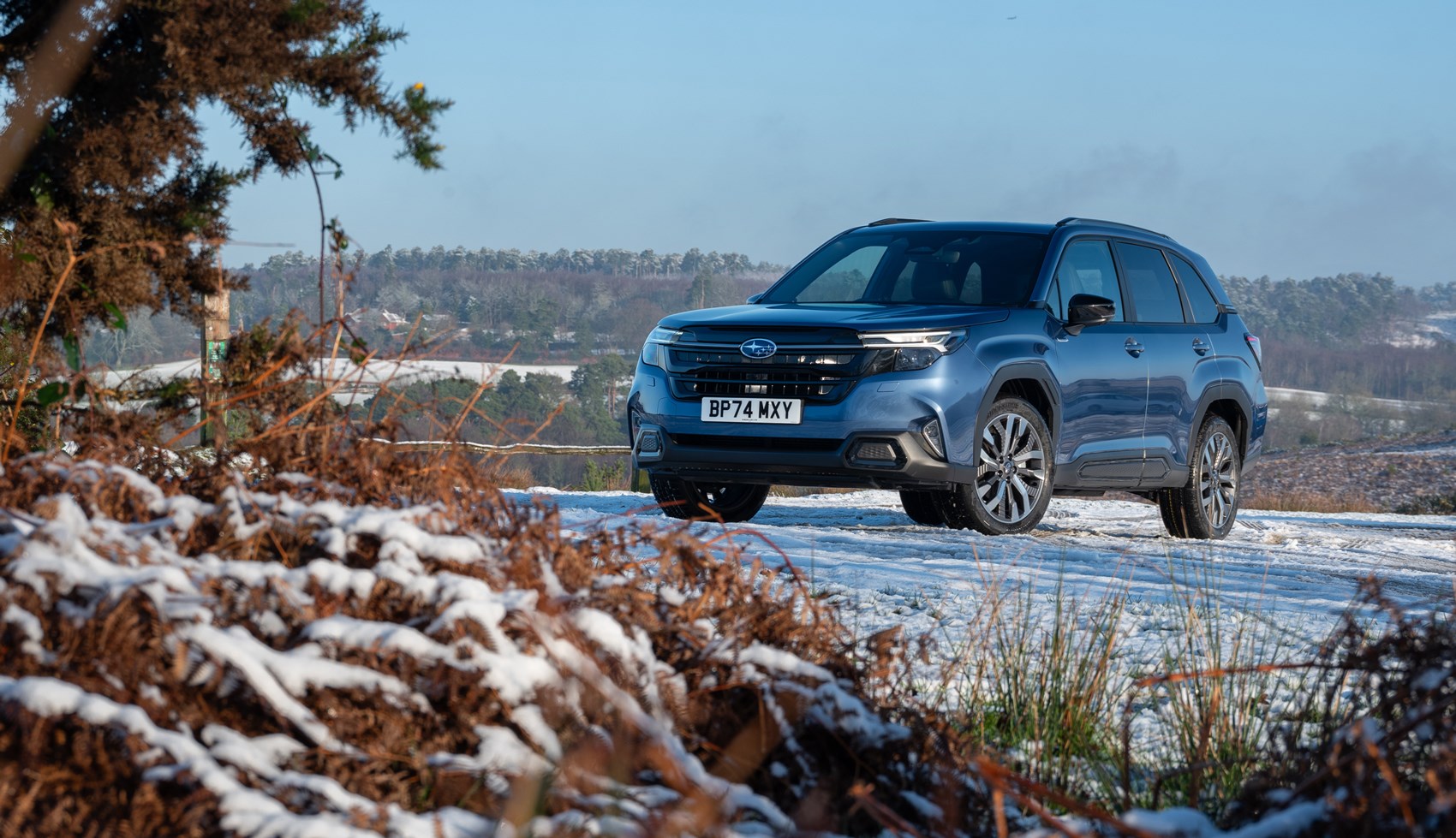
But it’s the small stuff where Subaru gets nerdy when pointing out the details, using extremely specific stats. A 10 per cent improvement in chassis rigidity. Up to 44 per cent less head toss from more tightly controlled suspension. A calculated 39 per cent less interior noise on the move. The lower line of the rear window is 40mm lower for better visibility, too.
What are the specs?
Subaru likes to keep things simple. Only one powertrain model is offered, which is largely the same as the old one: a 2.0-litre four-cylinder ‘e-boxer’ engine with mild hybrid assistance. The power is sent permanently to all four wheels via Subaru’s ‘Lineartronic’ continuously variable transmission. As before, the system allows for low-speed electric-only driving, which is handy for heavy traffic or parking.
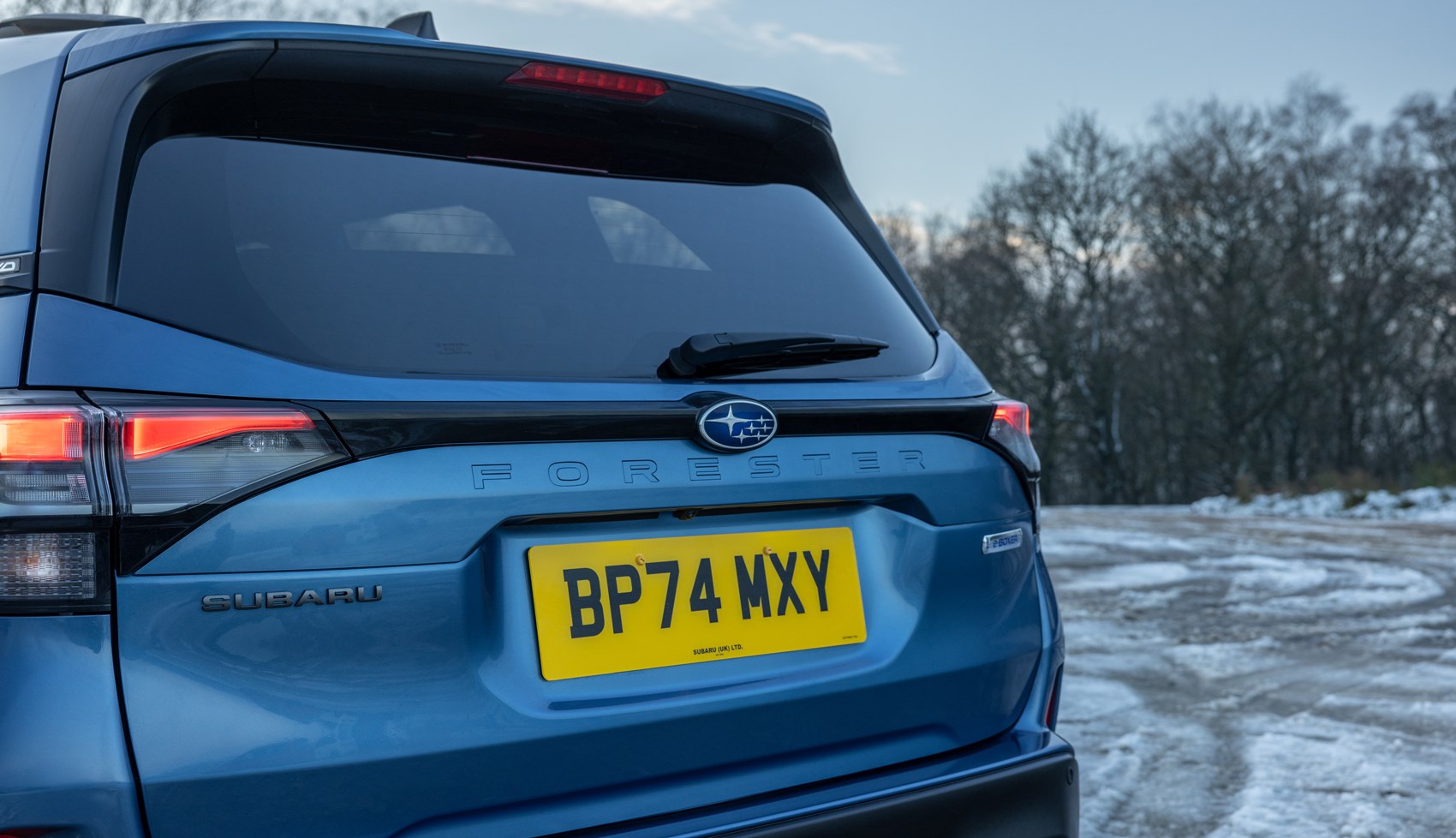
The Forester is available in three trim levels, and Subaru doesn’t offer options – helping to keep ordering one simple. The line-up starts with Limited, which inclides 18-inch alloys, heated and electric front driver seats, 360-degree parking cameras, a wireless phone charger and the brand’s Eyesight suite of safety tech. Wireless Apple CarPlay and Android Auto are standard on every model.
Mid-spec Field includes a heated steering wheel, powered tailgate and sat-nav inside the new infotainment screen – as well as bespoke green trimmings. Top-spec Touring adds 19-inch wheels, heated rear seats and a sunroof. We drove a mid-spec Field model.
What’s it like to drive?
The most noticeable improvement is the quietness of the powertrain. This is a relatively rough flat-four mated to a gearbox technology known to make cars moo if you’re heavy on the throttle – and this is no different. But Subaru’s done serious work improving soundproofing and dampening noise on the move; we tested this new generation directly after getting a refresher in the old one, and there’s a marked difference.
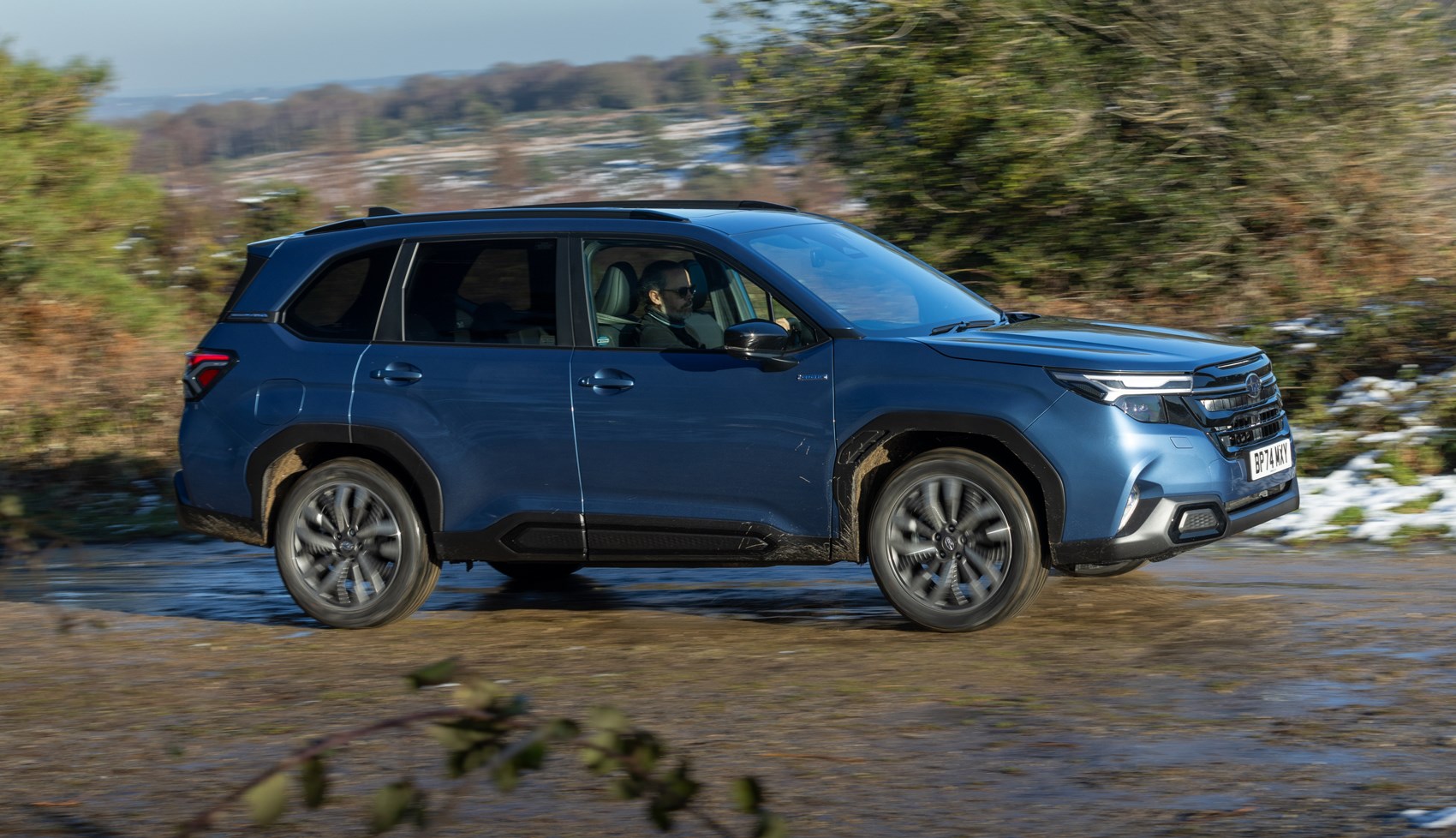
Has the powertrain improved from a performance perspective? No. The Forester is slow with a capital S, clocking a TWELVE second 0-62mph time. Fine for pootling around, but it feels rather lax when you’re trying to get up to speed on the motorway. The flipside is that the Forester can very much meet its WLTP fuel economy figure – our test drive of the Forester saw a 34.5mpg figure returned, which mixed country roads with motorway runs. Is that figure hugely impressive? Not really, but it does manage the claim.
When you’re on the motorway, the Forester is settled and calm. This is, in most situations, a comfortable car to cruise around in. There is a bit of bluster across the door mirrors at speed, mind, which takes the edge off the quietness.
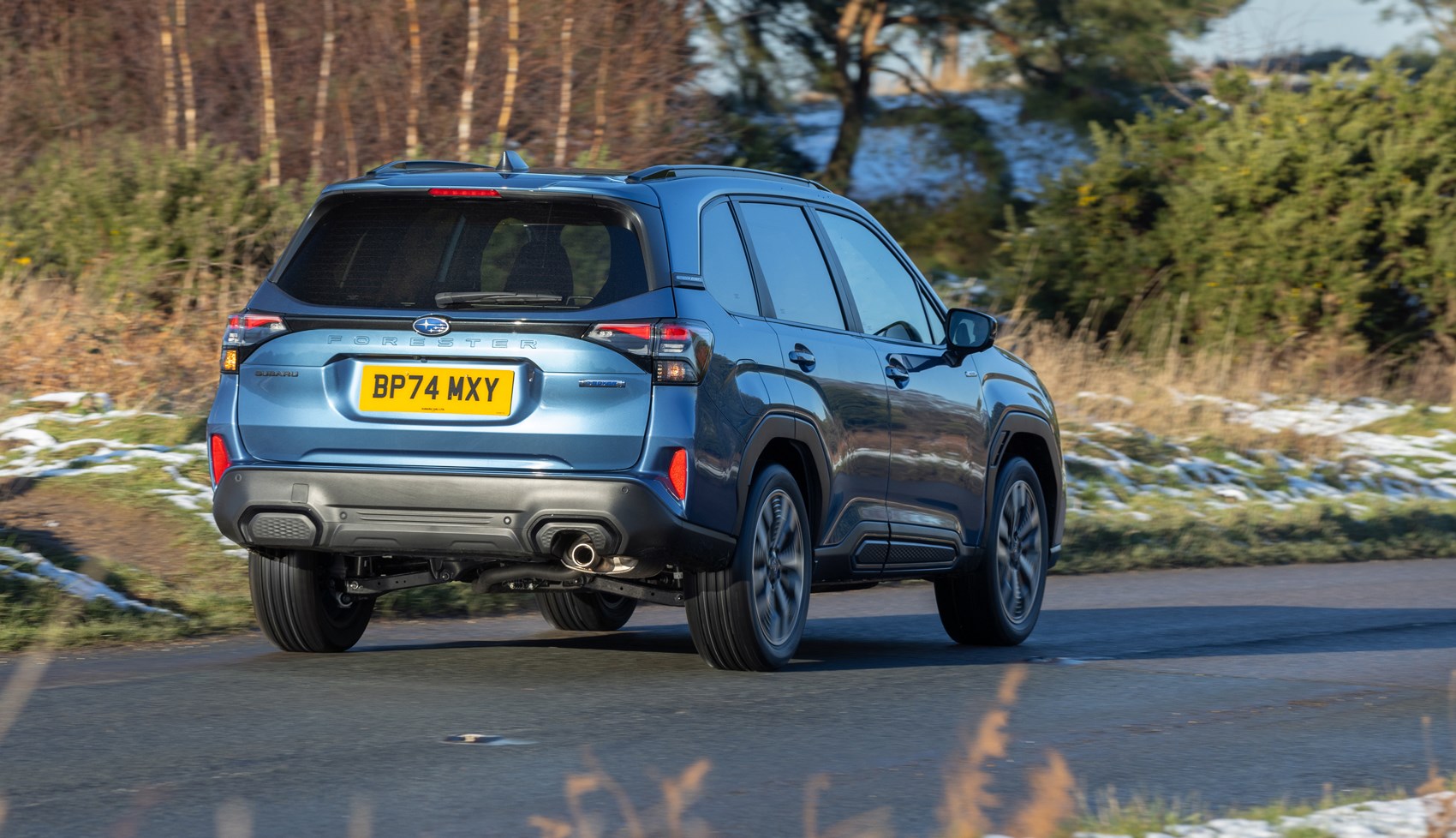
And, on a country back road where the Forester will likely spend a lot of its time, it’s a pretty tame car to drive. The steering is soggy and not that communicative, for example, and the efforts to include a sporty setting for the powertrain don’t seem to add much. This a peak pootle-mobile.
What’s the interior like?
Again, it’s largely about minor-yet-significant updates here. Gone, for example, is the small upper display that gave you quick-look info in favour of a much larger, glossy portrait central display. The Forester isn’t completely devoid of buttons, with a few settings like temperature control remaining a physical switch, but it’s not far off. That said, the climate controls have a fixed location at the bottom of the central screen.
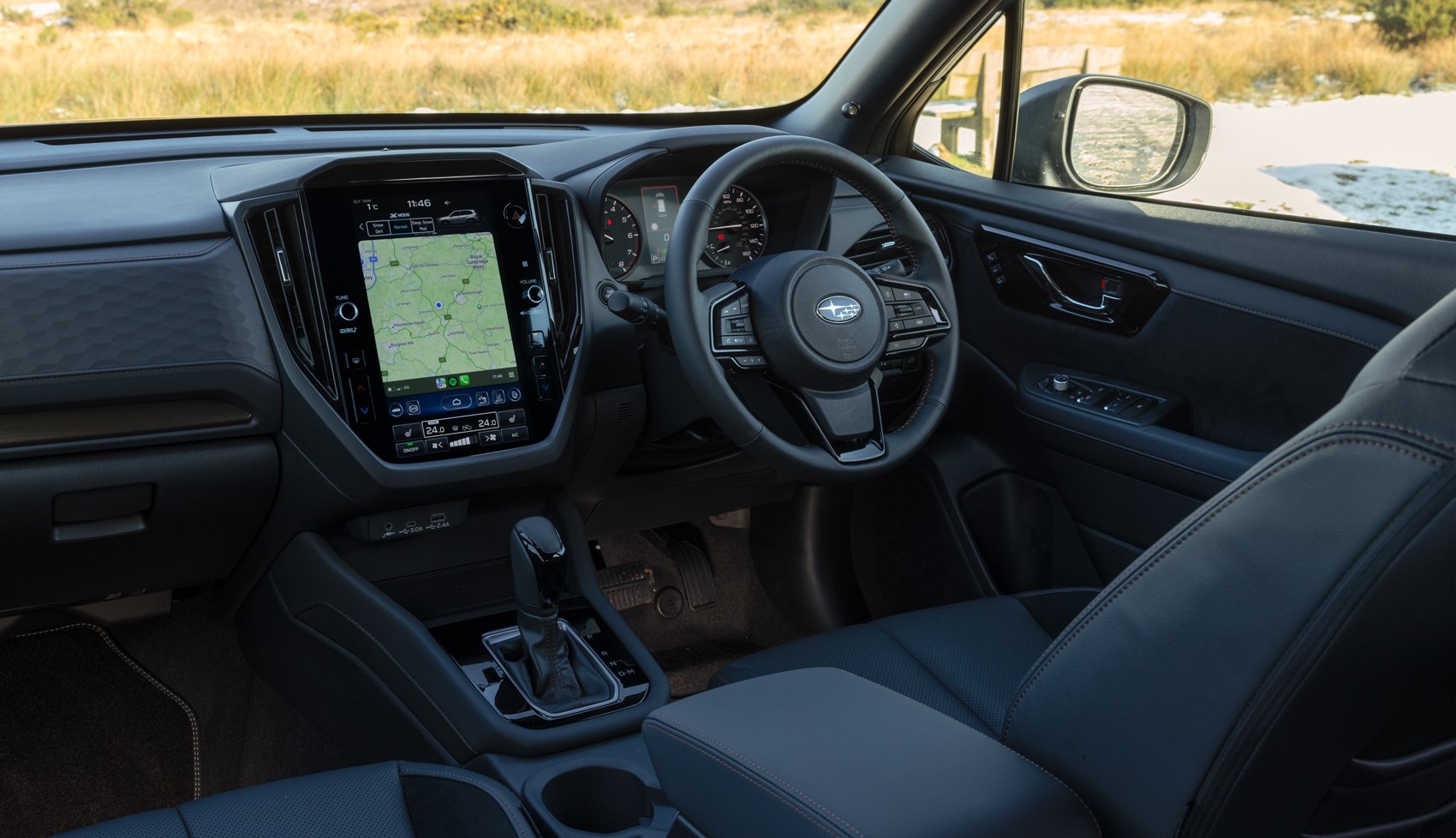
The infotainment itself is… fine. It’s functional, clear enough and has a sensible logic to it. Go for a model with nav (i.e.: Field or Touring) and the Forester also comes with What3Words functionality added to the navigation system. Many will use the as-standard wireless Android Auto or Apple CarPlay, though.
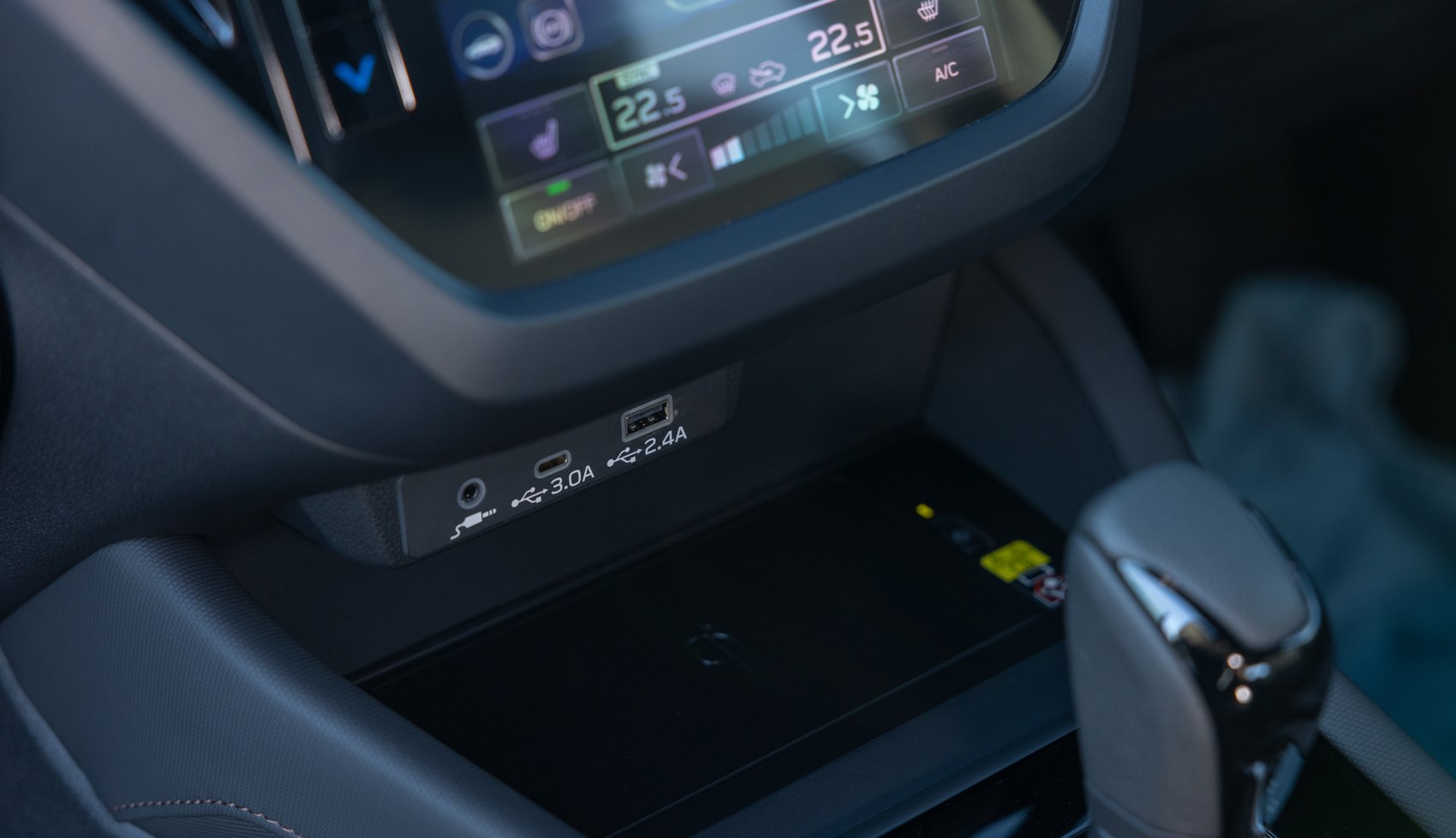
Other than that, it’s relatively business as usual for a Subaru model. The seats are thickly padded and plump, offering a comfortable chair to sit in on your drive. All of the materials used feel durable and built to last, and the Forester excels on space and visibility. Rear legroom – even for tall adults sat behind tall adults – is impressive, and the 508-litre boot is about on par with a lot of cars of this size.
Before you buy
Subaru claims the latest Forester is the cheapest way into getting a proper 4×4 for this class of car, with the base model Forester Limited starting at £38,995. Prices rise to £40,440 for the Field model, and £42,995 for the Touring.
The brand is targeting plenty of family-sized crossover SUVs, including the Mazda CX-5 and Hyundai Tucson to name just two. It’s also looking at convincing some Toyota RAV4 buyers, given the Forester offers a hybrid powertrain and four-wheel drive for a lower cost.
Verdict: Subaru Forester
In 2024, I named the previous-generation Subaru Forester my most disappointing drive of the year – mainly because it felt behind the curve compared to so many cars for the money. But, with this version, Subaru has gone about improving the Forester in the only way the brand knows: carefully, and with consideration. Like trimming a bonsai tree.
It might not look like much has changed on the surface, but this is a quieter and more comfortable family car to drive than before – and one that’s seen some tech improvements, too. It’s still a bit soggy to drive, but it manages to feel tough and is impressively practical for the money.
Specs are for a Subaru Forester Limited